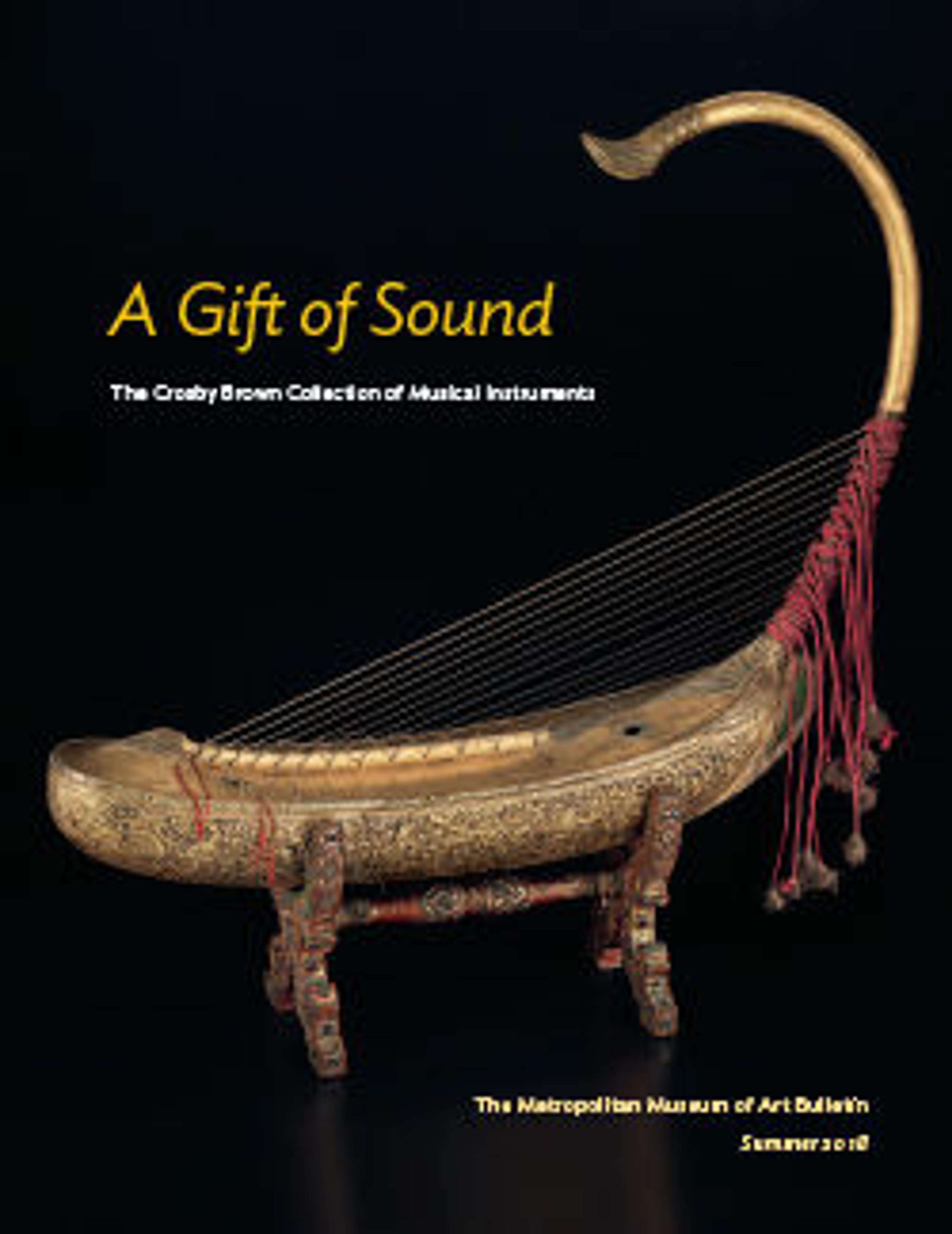Qānūn
Although the term qānūn(kanun) appears in the thirteenth century, the trapezoidal plucked zither (psaltery) used today probably originated in Egypt or Syria during the 18th century. Today it is distributed throughout the Middle East, North Africa and parts of Asia. The adjustable levers on the oblique side (player's left), called mandal ("that which supports") in Turkish and orabe ("carriage") in Arabic, raise the pitch of each triple course of gut or nylon strings. This permits the player to use several tones, often shown as scales, that satisfy a makam (a melodic pattern combined with stock phrases and ornaments). The bridge supporting the strings is placed upon a belly ("wajh") traditionally made of fishskin. Placed on a small table the kanun's 72 strings, grouped in 24 courses, are plucked with metal plectra attached to the player's index fingers. Modern kanuns are larger than this 19th-century model.
Artwork Details
- Title: Qānūn
- Date: 19th century
- Geography: Turkey
- Culture: Turkish
- Medium: Wood; parchment; gut strings; mother-of-pearl, ivory, bone, ebony inlay; shells; gold foil; metal; brass
- Dimensions: D. 3 11/16 × L. 38 1/16 × W. 15 1/2 in. (9.3 × 96.6 × 39.4 cm)
- Classification: Chordophone-Zither-plucked
- Credit Line: The Crosby Brown Collection of Musical Instruments, 1889
- Object Number: 89.4.330
- Curatorial Department: Musical Instruments
More Artwork
Research Resources
The Met provides unparalleled resources for research and welcomes an international community of students and scholars. The Met's Open Access API is where creators and researchers can connect to the The Met collection. Open Access data and public domain images are available for unrestricted commercial and noncommercial use without permission or fee.
To request images under copyright and other restrictions, please use this Image Request form.
Feedback
We continue to research and examine historical and cultural context for objects in The Met collection. If you have comments or questions about this object record, please contact us using the form below. The Museum looks forward to receiving your comments.
